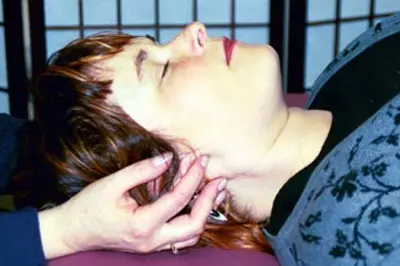Healing Touch

What is healing touch?
Question: I know a massage feels great, but have recently read about “Healing Touch” being used to treat and prevent health problems. What exactly is Healing Touch, and what conditions does it help?
Answer: Marilyn Bach, a Certified Healing Touch Practitioner and adjunct faculty member at the University of Minnesota, writes: Healing Touch is a complementary therapy based on the energetic techniques of many practices, both ancient and contemporary. It is based on the belief that humans are composed of energy fields that are in constant interaction with self, others, and the environment. The practice falls into the general category of Energy Therapy, along with other familiar energy-based practices like Reiki or Qigong.
The term “Healing Touch” certainly sounds like massage. However, unlike massage, Healing Touch practitioners may or may not literally touch their patients! In Healing Touch, trained practitioners use their hands (using either direct contact or hands placed above the body) to clear, align, and balance the energy field of another person. This realigns the patient’s energy flow, which reactivates the patient’s mind/body/spirit connection, and eliminates blockages to self-healing.
In other words, Healing Touch does not necessarily strive to cure anything. Instead, Healing Touch creates an optimal physical, mental, and spiritual state so the patient can most effectively heal. It is important to remember that Healing Touch is not a substitute for medical treatment. Instead, it complements conventional medical care and effectively integrates with other mind/body treatments, including massage, guided imagery, music therapy, acupressure, biofeedback, or psychotherapy.
Healing Touch was developed by nurse Janet Mentgen in 1980 in Colorado. It is now used by more than 30,000 nurses in hospitals each year for conditions ranging from chronic pain, post-operative recovery, migraine, cancer, and depression to general stress reduction and improvement of spiritual, mental and physical health. Measuring its effectiveness can be difficult, because it is hard to determine whether outcomes can be attributed solely to Healing Touch techniques or to other factors. However, Healing Touch’s popularity and use is growing annually; 75,000 people are formally trained in Healing Touch techniques, and the practice is employed worldwide.
To learn more about Healing Touch, including information on theory, practice, training, and regulation, visit the official Healing Touch web site.